On March 14, the Prime Minister issued Directive No. 07/CT-TTg to "Promote the implementation of the project to develop applications of population data, identification and electronic authentication to serve national digital transformation in the 2022-2025 period, with a vision to 2030 in ministries, branches and localities in 2025 and the following years".

Dr. Nguyen Tri Thuc, Deputy Minister of Health (Photo: Hospital).
In particular, the Prime Minister assigned the Ministry of Health to direct and urge 100% of hospitals nationwide to deploy electronic medical records; connect data between district and provincial hospitals of localities with hospitals under the Ministry of Health, and take advantage of this to reduce testing for people.
The above tasks must be completed by September.
From the Prime Minister's strong direction and the birth of revolutionary Resolutions of the Politburo, the health sector has recently made important changes, in the context of the country having just carried out a "reorganization of the country".
On the occasion of the 80th anniversary of Vietnam's National Day (September 2, 1945 - September 2, 2025), Dr. Nguyen Tri Thuc, Member of the Standing Committee of the Party Committee of the Ministry, Deputy Minister of Health, had a special conversation with Dan Tri reporter to share the breakthroughs in the development of the health sector in the era of national development.
Resolution 57 – a breakthrough in digital transformation in Vietnam
Dear Deputy Minister, recently, the electronic medical record system at Cho Ray Hospital - the "leading bird" of the health sector in the Southern region - has been officially deployed and is considered by the Ministry of Health as a proud achievement to celebrate the 80th anniversary of National Day.
But before that, Cho Ray had tried many times to apply electronic medical records but could not complete it. As the manager and operator of Cho Ray Hospital throughout the past time, please share in detail the process and efforts for the unit to achieve the above achievements.
- Previously, despite great efforts, Cho Ray Hospital had not yet met the quality requirements to create an electronic medical record. If described in three levels (digitization - digital transformation - electronic medical record), at that time, Cho Ray's electronic medical record was only slightly above the "digitization" level.
There are many reasons for this situation. First of all, the IT infrastructure of Cho Ray Hospital is too old and has not been upgraded for decades.
However, the key difficulty lies in the mechanism. Bidding for IT procurement is really difficult due to the barrier in building technical configurations. Hospitals must ensure that the configuration does not limit contractors, must meet professional requirements, but at the same time must still choose the "cheapest" price. This is a difficult problem.
Therefore, for a long time, digital transformation – not only at Cho Ray Hospital but also at many other hospitals – fell into a state of “hibernation”, not meeting the expectations of the Government and the Ministry of Health.
On December 22, 2024, the Politburo issued Resolution No. 57-NQ/TW on breakthroughs in science, technology, innovation and national digital transformation. This is considered a turning point, opening a period of strong breakthroughs in digital transformation in Vietnam.
Resolution No. 57-NQ/TW dated December 22, 2024 has received widespread support from the scientific and business communities. From this Resolution, the National Assembly and the Government have issued a series of specific policies, established an outstanding procurement mechanism, and at the same time promoted the spirit of innovation and creativity in each ministry and sector - including the Ministry of Health.
In particular, on March 14, the Prime Minister issued Directive No. 07/CT-TTg, which clearly stated that 100% of hospitals nationwide must deploy electronic medical records, to be completed by September this year. The Prime Minister's directive is both an order and a call for all hospitals nationwide to urgently take action.
For Cho Ray Hospital, from financial resources to medical examination and treatment processes, drug dispensing processes, image storage, testing, etc., the foundation is already available. The remaining problem is how to concretize and link them together into a complete electronic medical record.
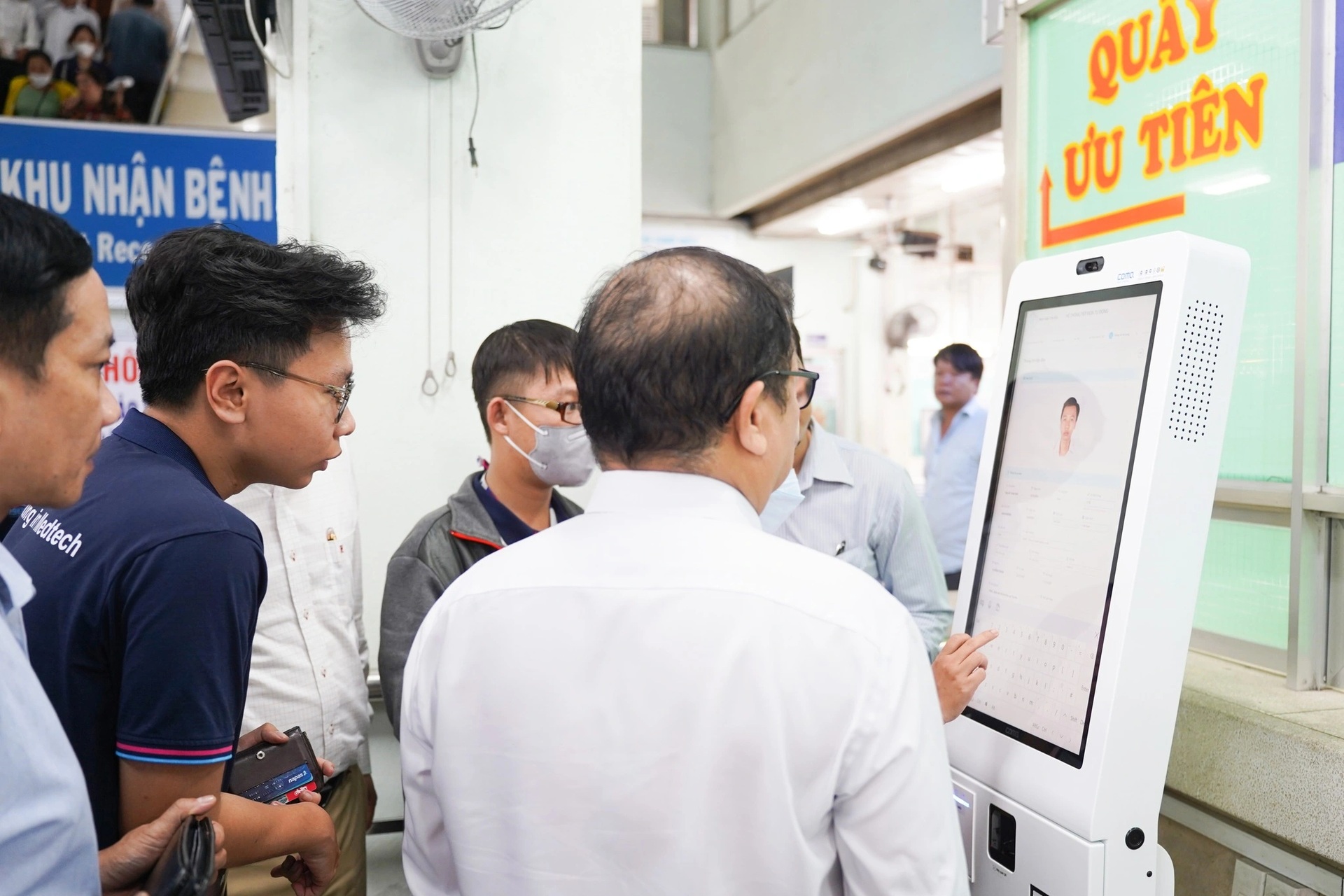
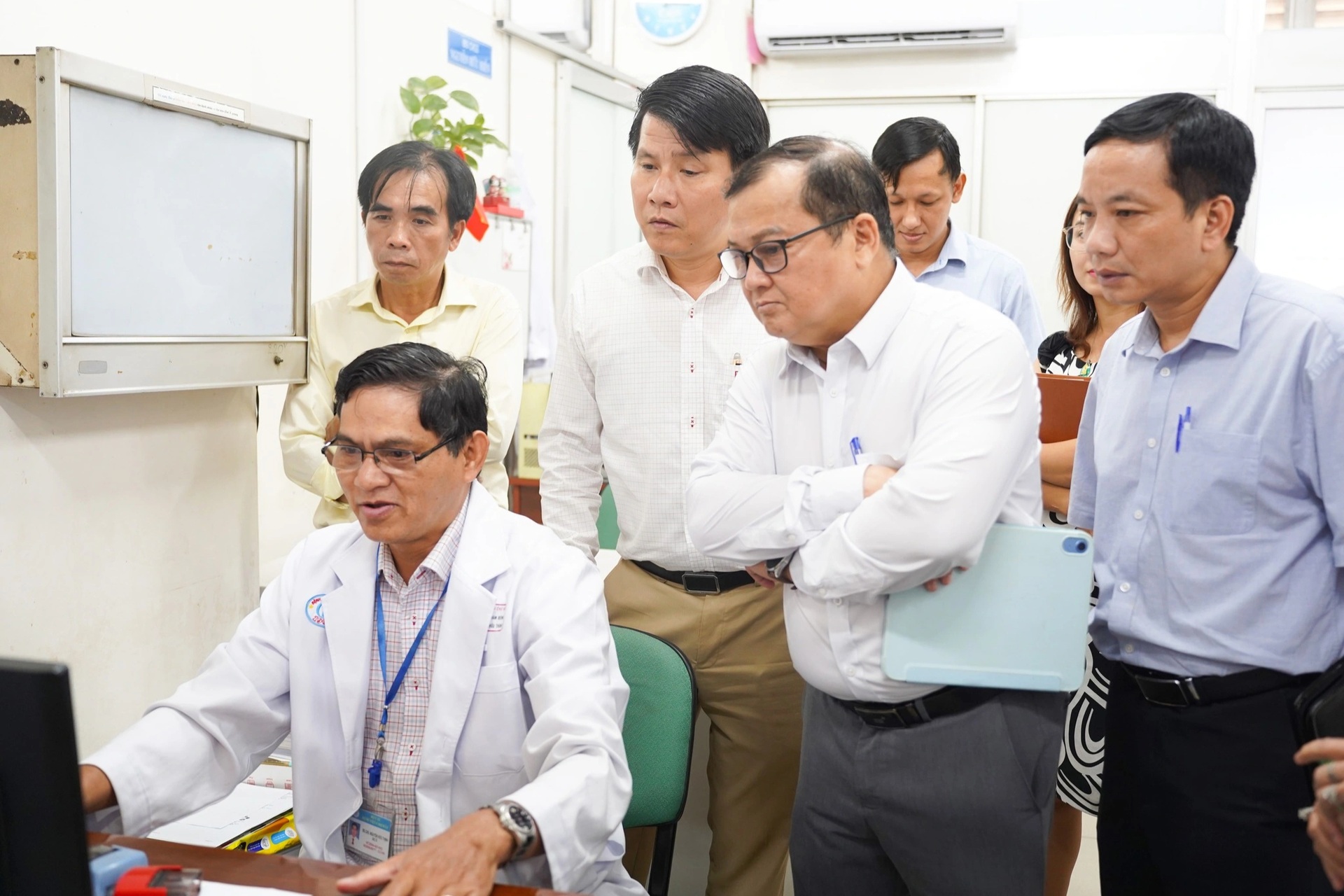
Cho Ray Hospital has successfully deployed electronic medical records over the past 2 months (Photo: Hospital).
Although the theory is like that, it is not easy to implement in practice. Because electronic medical records are not simply a technical matter of information technology, but also have to specify the current legal regulations, from the Law on Medical Examination and Treatment; Law on Health Insurance; Law on Civil Servants to the treatment regimes, salaries... when operating.
Electronic medical records can be considered the “backbone” that guides all hospital operations. If electronic medical records are implemented but people cannot pay for health insurance, it is considered a failure.
Therefore, following the direction of the Prime Minister, Cho Ray Hospital has urgently mobilized all human resources, "working during the day is not enough, so we have to work at night". The hospital has also invited a council of experts in electronic medical records, social insurance, police, cyber security, etc. to assess and ensure safety and feasibility before putting it into operation.
After about 3 months of careful preparation, each step was carefully reviewed, finally, Cho Ray Hospital successfully deployed electronic medical records and has been operating very well for the past two months.
Connecting the “doctors' book” and comprehensive benefits
So what are the results achieved after Cho Ray Hospital successfully implemented electronic medical records, sir?
- It must be affirmed that electronic medical records have brought about remarkable results, not only in terms of expertise but also as a strong boost in spirit. The hospital staff is very excited, because after examining a patient, the doctor can monitor the medical records anywhere, prescribe medicine anywhere, instead of having to return to the administrative office to operate on the computer; therefore, patients no longer have to wait long.
Previously, when a patient finished treatment in one department and then transferred to another department, or from a lower level hospital to a higher level hospital, communication with the doctor would often be cut off. Now with electronic medical records, doctors can grasp the entire treatment process of the patient at all levels.
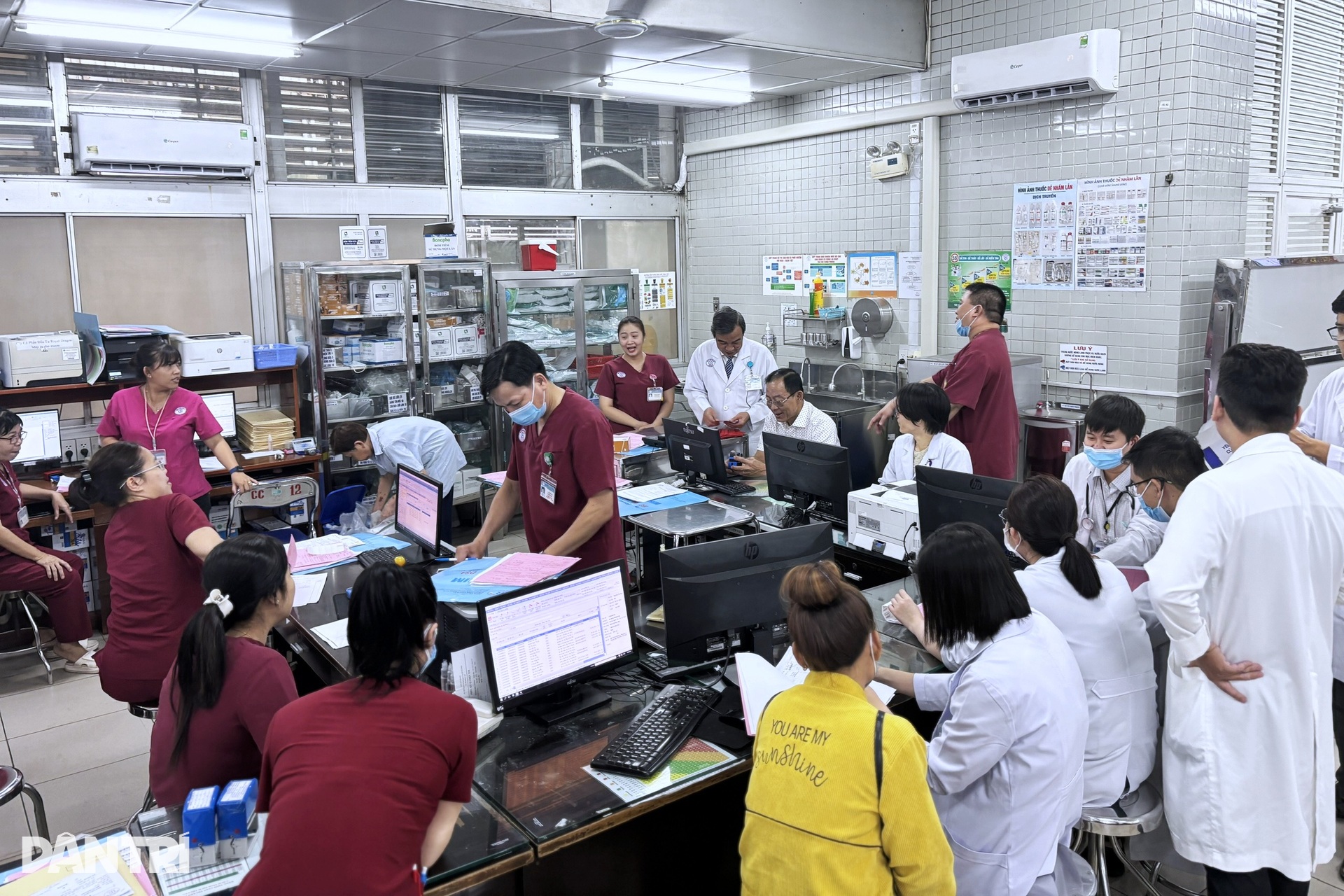
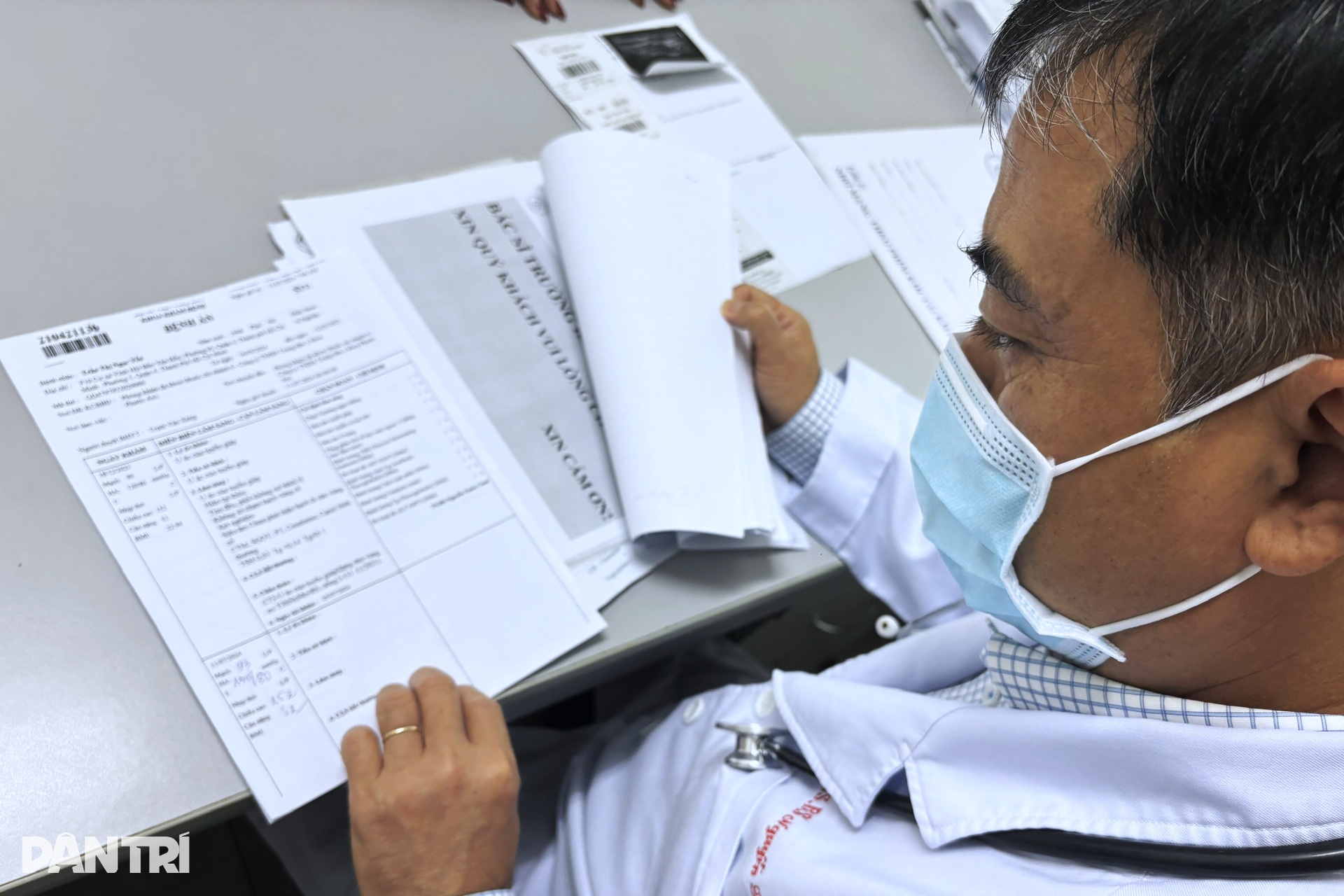
Doctors at Cho Ray Hospital look at patient's medical records in the traditional way (Photo: Hoang Le).
This is especially important, because each patient is like a “book” for the doctor. The doctor needs to “read” the book completely to increase his experience, limit errors, and perfect his diagnostic and treatment skills.
From a management perspective, electronic medical records help hospital leaders have a more comprehensive view, easily analyze and count the number of patients increasing or decreasing, as well as help classify disease patterns by week and month.
At the same time, electronic medical records also contribute to limiting financial losses for hospitals. For example, in the past, when buying a bottle of chemicals, the management of the number of tests performed was only at a relative level.
Now, when applying electronic medical records, we will accurately manage and quantify each use in detail; when chemicals run out, we will be notified immediately, thereby eliminating the situation of off-line testing.
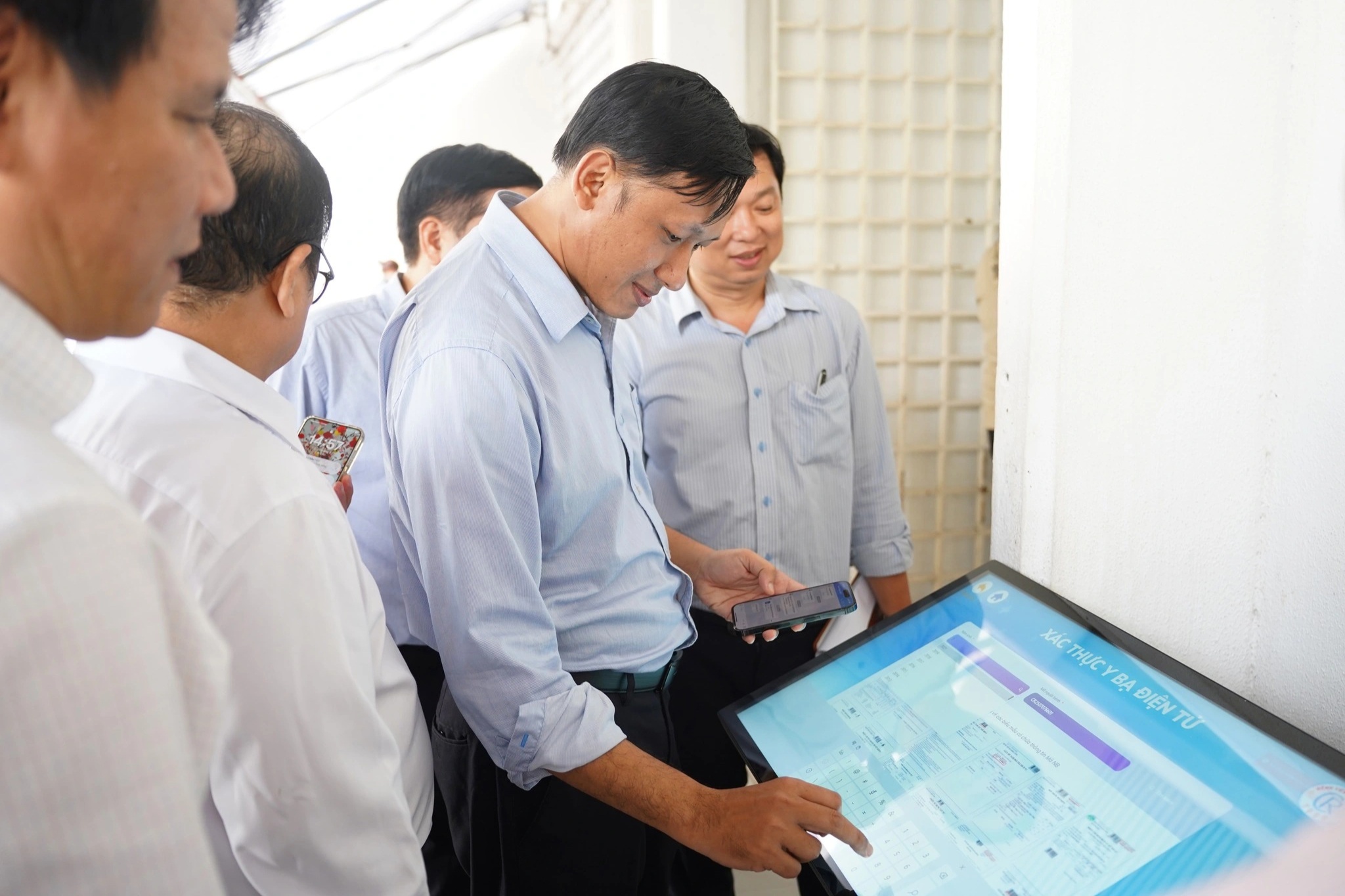
The implementation of electronic medical records brings many practical benefits (Photo: Hospital).
In short, the implementation of electronic medical records will bring comprehensive benefits: for hospitals, for patients, for scientific research, and for the strategic orientation of future medical development.
The task is very heavy, but it must be done for the health of the people.
From July 1, the whole country began operating under a two-tier government model. Could you tell us what opportunities and challenges the health sector has to carry out its mission of taking care of people’s health in this new era?
- When operating under a two-tier government model, the health sector has the opportunity to focus on implementing key tasks assigned by the Politburo, the Secretariat, the National Assembly and the Government.
It is a shift in thinking from focusing on disease treatment to disease prevention, while focusing on developing primary health care - as directed by the General Secretary - towards the goal of each person receiving a periodic health check-up or free screening at least once a year, according to priority groups and roadmaps.
In this new management model, commune and ward health stations have a particularly important position and role, completely different from before. The station must ensure the most basic treatment capacity, with essential specialties such as obstetrics, pediatrics and internal medicine.
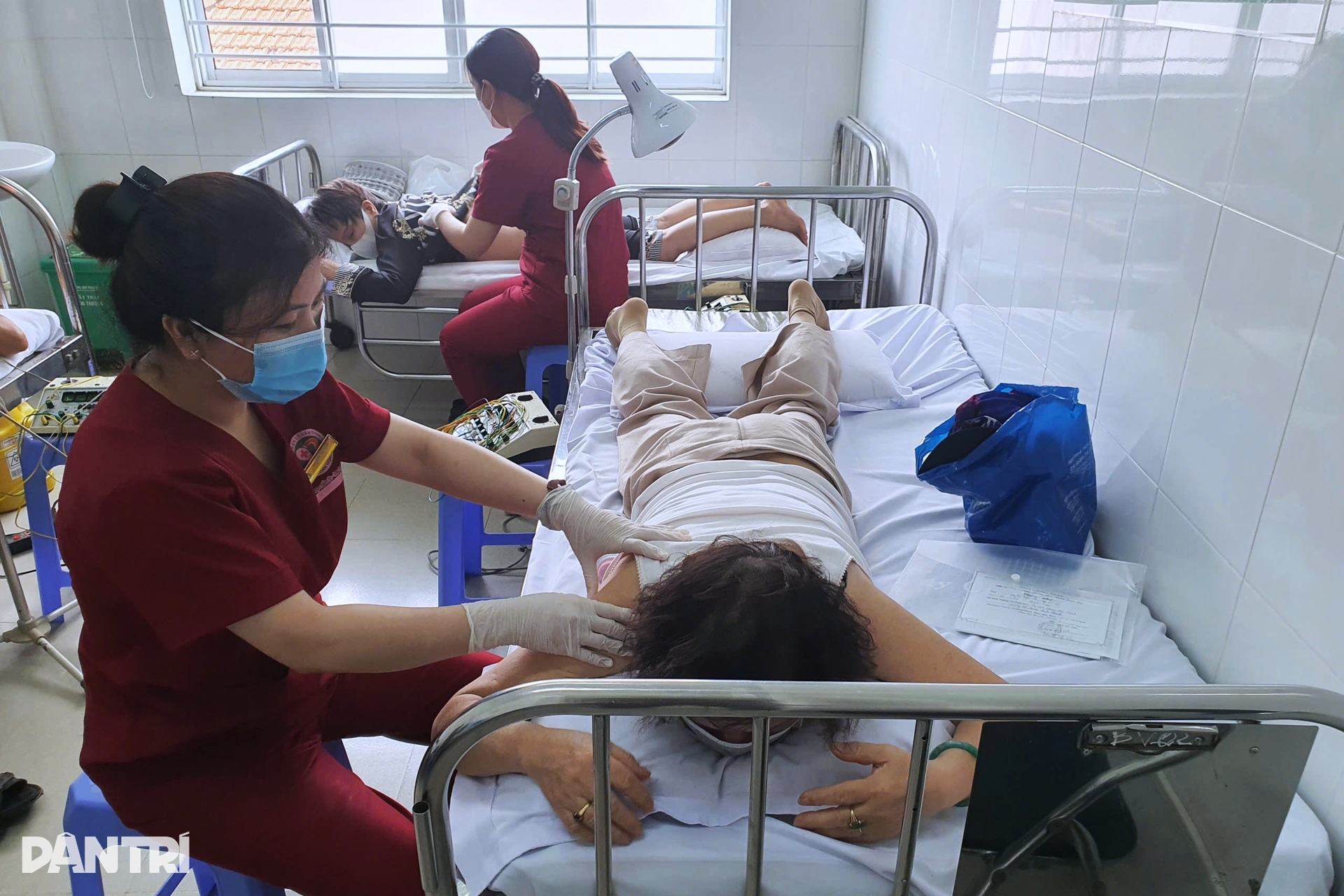
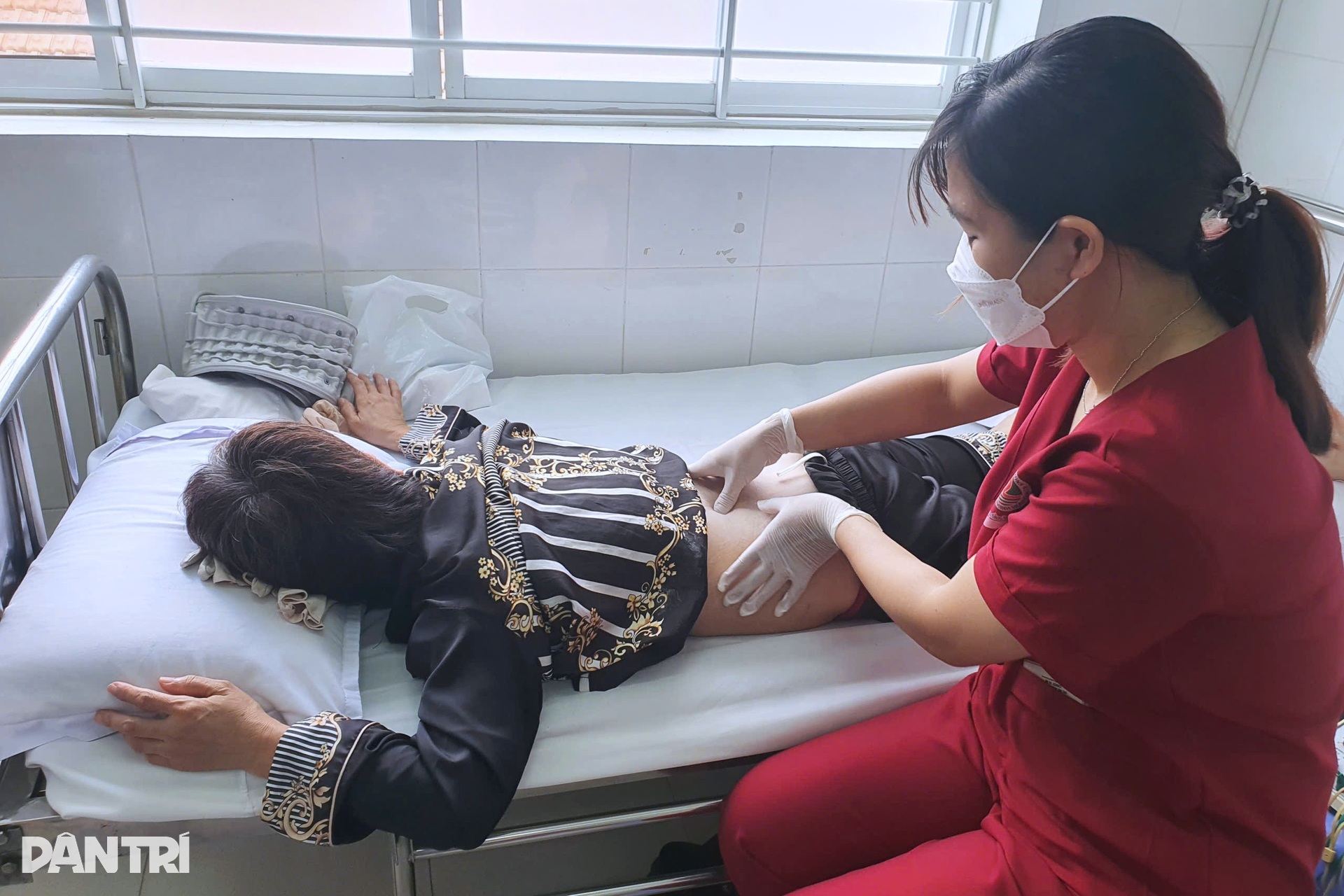
People come for health care at a satellite clinic located in a medical station in Ho Chi Minh City (Photo: Hoang Le).
At the same time, the station must also be responsible for preventive health care for the entire area, including disease management, expanded vaccination implementation, etc., to promptly provide warnings to the Centers for Disease Control (CDC). In addition, the station must also manage the health of all residents in the area, including agencies and schools.
To do that, commune and ward health stations need to implement periodic health check-ups, manage chronic diseases, and analyze disease patterns according to each population group.
As I shared above, when electronic medical records are deployed synchronously and in parallel with the connection of the national database system, the entire treatment process of patients will become smooth.
After being treated at a higher level, the patient can be transferred back to the local area for monitoring and treatment based on data from the electronic medical record. At this time, the health care role mainly belongs to the commune and ward health stations.
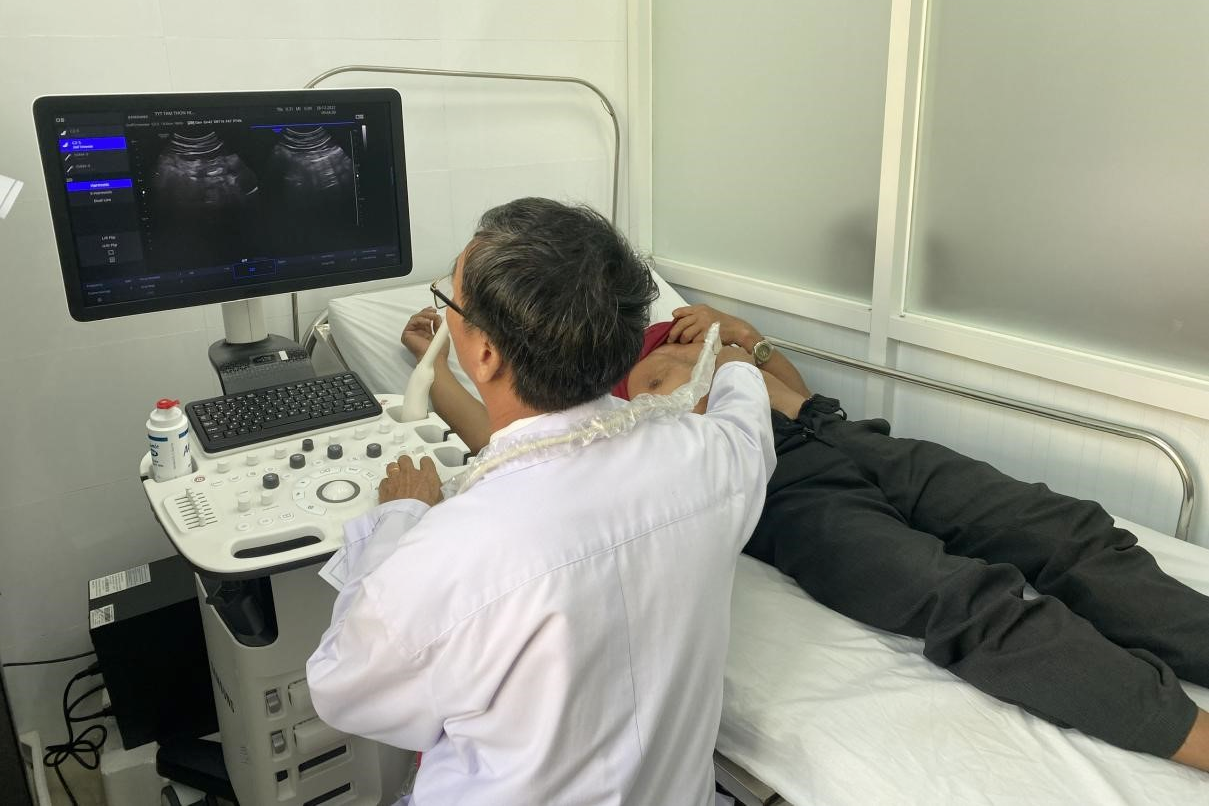
Staff at a medical station in Ho Chi Minh City check people's health (Photo: SYT).
That shows that, along with the two-level government model, the health sector needs to develop a comprehensive and systematic human resource training project for commune health stations to meet all the needs and functions in the new situation. This is one of the major challenges for the health sector.
Recently, the Ministry of Health has advised the Politburo to issue a Resolution on a number of breakthrough solutions to strengthen the protection, care and improvement of people's health by 2030, with a vision to 2045. Currently, the Politburo is considering approving this Resolution.
At the same time, the Minister of Health has directed the urgent issuance of documents guiding the functions and tasks of commune and ward health stations; issued basic health check-up packages to manage chronic diseases, and annual health check-ups for people. This is a feat and the Ministry of Health has been implementing it with great determination.
We are well aware that meeting the expectations and requirements of the Politburo, the General Secretary and the Government in the work of taking care of people's health is an extremely heavy task. However, to bring benefits to the people and the country, the health sector is fully confident that it will be able to do so.
The key to opening the door to integration in the healthcare industry
You just mentioned that the Ministry of Health has prepared a Resolution on a number of breakthrough solutions to strengthen the protection, care and improvement of people's health by 2030, with a vision to 2045. Is this the development focus of the sector in the era of national development, Deputy Minister?
- Among the key Resolutions of the Politburo, Resolution No. 57-NQ/TW dated December 22, 2024 as mentioned above and Resolution No. 59-NQ-TW dated January 24, 2025 of the Politburo on international integration in the new situation are of special importance to the health sector.
In the new era - the era of national growth - international integration is no longer a choice, but an inevitable path.
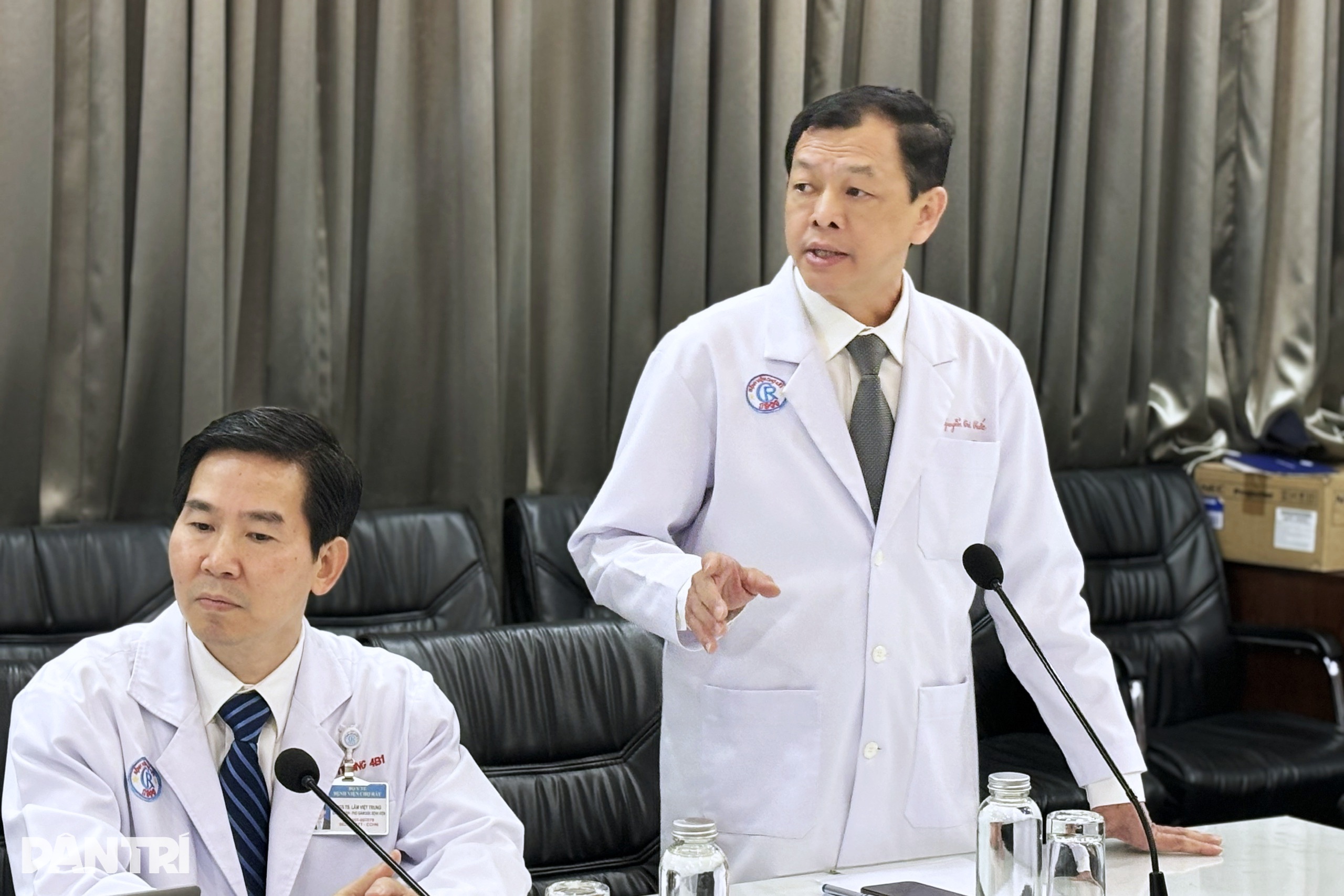
The Deputy Minister of Health affirmed that international integration in the new situation is of special importance to the medical sector (Photo: Hoang Le).
To realize the spirit and superiority of the above Resolutions, on June 13, the Party Committee of the Ministry of Health issued Plan No. 23-KH/DU; the Ministry of Health issued Decision No. 787/QD-BYT dated March 6, 2025 and Decision No. 2121/QD-BYT dated June 26, 2025 on implementing Resolution No. 57-NQ/TW dated December 22, 2024 of the Politburo in the health sector, focusing on 7 groups of tasks:
Firstly, raise awareness and make breakthroughs in innovative thinking in the health sector, determine strong political determination, resolutely lead and direct, create new momentum and new spirit in the whole society in developing science, technology, innovation and digital transformation in health.
Second, urgently and resolutely perfect institutions; eliminate all ideas, concepts, and barriers that are hindering development, and turn institutions into a competitive advantage in science and technology development, innovation, and digital transformation.
Third, increase investment and improve infrastructure for science, technology, innovation and digital transformation in healthcare.
Fourth, develop and utilize high-quality human resources and talents to meet the requirements of science and technology development, innovation and digital transformation in healthcare.
Fifth, promote digital transformation, application of science, technology, and innovation in the operations of agencies in the political system of the health sector, improve governance efficiency, effectiveness of state management in the health sector, and ensure national defense and security.
Sixth, strongly promote science, technology, innovation and digital transformation activities in enterprises.
Seventh, strengthen international cooperation in science and technology development, innovation and digital transformation of healthcare.
In the period 2025-2030, to develop science and technology, the Ministry of Health issued Decision No. 3548/QD-BYT dated November 25, 2024 on approving the Ministry of Health-level Science and Technology Programs, focusing on 5 research fields.
One is to research, develop, and apply advanced techniques and methods in diagnosing and treating human diseases. Two is to research, develop, and apply advanced technology in preventing human diseases and disabilities; and develop vaccines and biological products.
Third, research and development of drugs and medical equipment. Fourth, research and development of medicinal herbs and traditional medicines. Fifth, scientific research to provide evidence for management and policy making in the health sector.
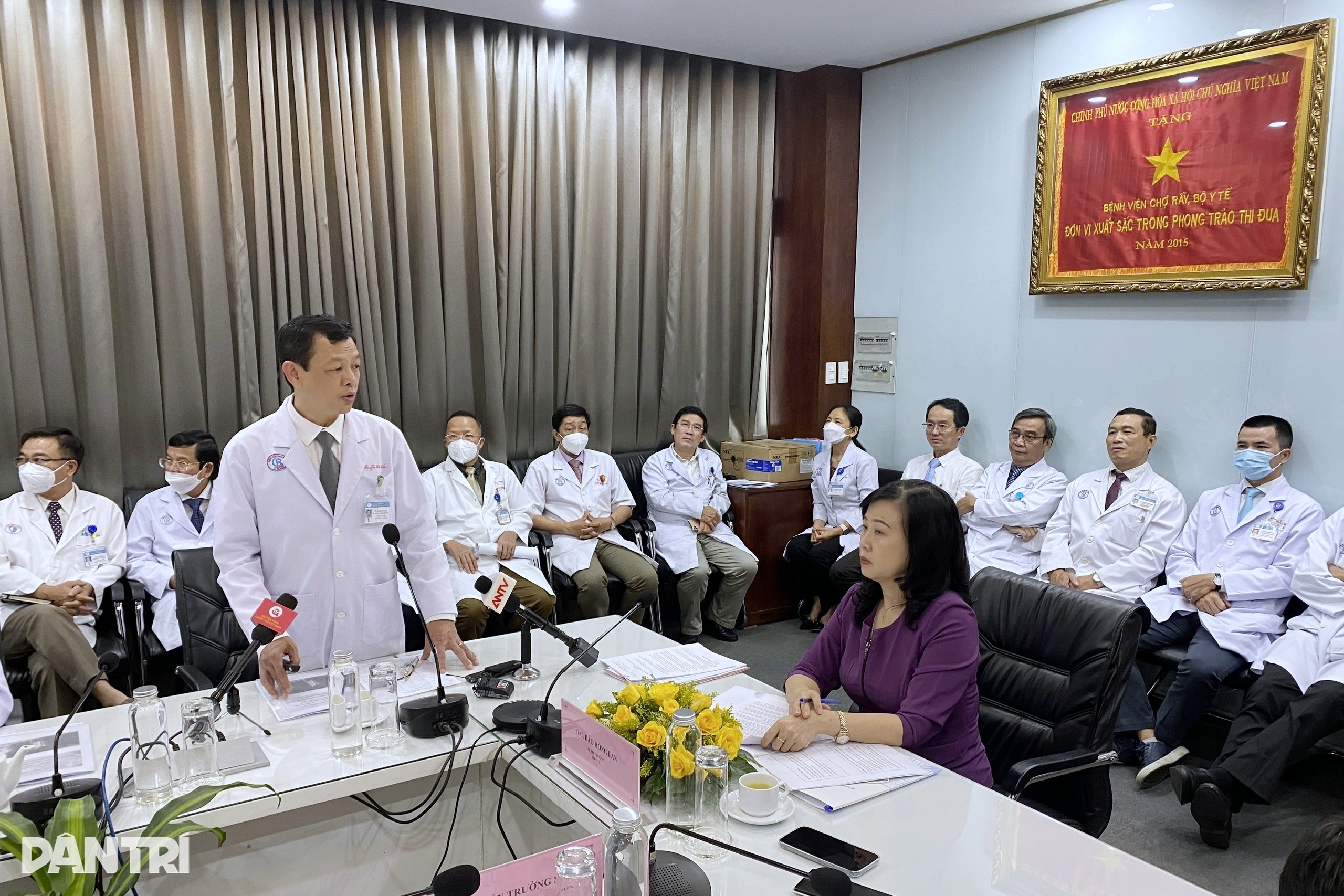
Dr. Nguyen Tri Thuc during a working session with the Minister of Health at Cho Ray Hospital (Photo: Hoang Le).
Many breakthrough projects have been and are being implemented by the health sector, such as cooperation in research and transfer of immune cell technology for cancer treatment with Germany, Japan and Singapore; clinical trials on mesenchymal stem cell therapy for the treatment of some incurable and chronic diseases; research on the application of personalized 3D printing technology in trauma treatment...
Regarding digital transformation, in addition to electronic medical records, the Ministry of Health is building a master plan for infrastructure development and application of information technology to serve digital transformation in healthcare by 2030; building national healthcare databases.
Regarding human resource training, the health sector considers innovation in health sector education and training as a focus. In 2025-2026, the Ministry of Health will institutionalize the specificity of training and apply a training model based on professional competency standards.
Finally, I want to share that the professional level of Vietnamese doctors is very good, fully capable of deep international integration.
The proof is that we have mastered many difficult techniques - which even countries in the region have not yet been able to do - such as organ transplant techniques that have reached a very high level, robotic surgery techniques, endoscopic techniques, cancer treatment fields or fetal heart intervention, cardiovascular intervention...
The key to opening the door to international integration in the coming time is English. Medical students, as well as doctors, must gradually consider English as a second language, in accordance with the direction in Conclusion No. 91-KL/TW dated August 12, 2024 of the Politburo.
Thank you for your valuable sharing!
Source: https://dantri.com.vn/suc-khoe/chi-thi-tu-thu-tuong-va-nhiem-vu-cap-bach-cua-nganh-y-20250831013255913.htm







![[Photo] Cat Ba - Green island paradise](/_next/image?url=https%3A%2F%2Fvphoto.vietnam.vn%2Fthumb%2F1200x675%2Fvietnam%2Fresource%2FIMAGE%2F2025%2F12%2F04%2F1764821844074_ndo_br_1-dcbthienduongxanh638-jpg.webp&w=3840&q=75)



















































![[VIMC 40 days of lightning speed] Hai Phong Port determined to break through, reaching the target of 2 million TEUs by 2025](https://vphoto.vietnam.vn/thumb/402x226/vietnam/resource/IMAGE/2025/12/04/1764816441820_chp_4-12-25.jpeg)
























































Comment (0)